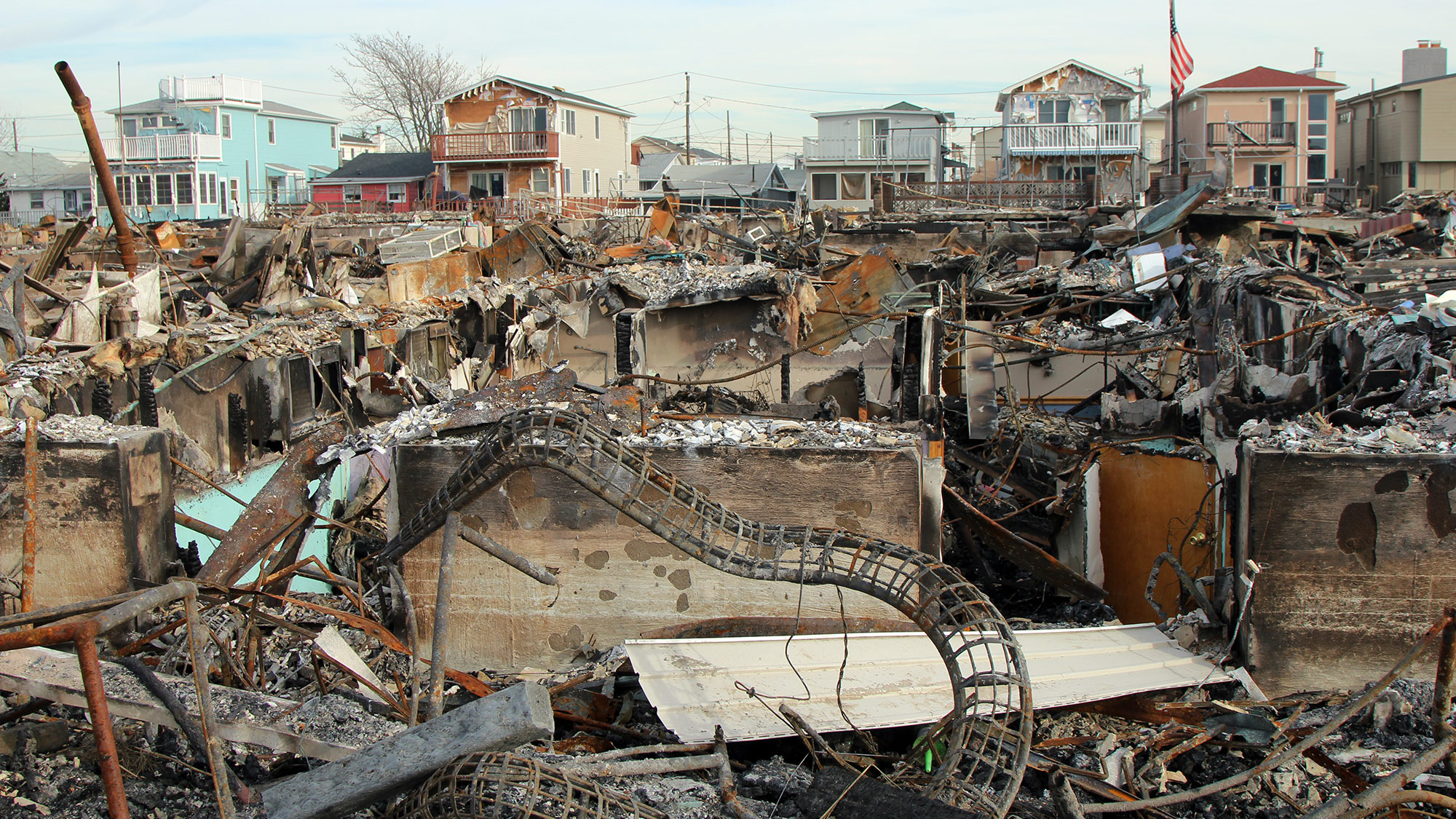“When a storm hits, there are no strangers — only neighbors helping neighbors, communities rallying to rebuild,” says President Obama in a YouTube video, looking out at Americans on the internet. In the aftermath of Hurricane Sandy, the White House has gone to some lengths to communicate its long-term strategy on disaster preparedness. You might expect the president to start a speech like this by talking about improving infrastructure, facilitating fast responses from FEMA, or even addressing environmental concerns, but instead, he led with the idea of strong communities. Which raises a question: What does neighborliness have to do with storm preparedness?
Quite a bit, apparently. A June study from the Associated Press and National Opinion Research Center at the University of Chicago found that towns and neighborhoods with a strong sense of social connection recovered faster after Hurricane Sandy. People living in the areas that recovered from the storm the fastest were more likely to say that others can be trusted (44 vs. 33 percent) and that the disaster brought out the best in their neighbors (81 vs. 63 percent). In areas that have had a harder time bouncing back, more people reported seeing looting (31 vs. 7 percent), vandalism (21 vs. 5 percent), and hoarding of food and water (47 vs. 25 percent).
To some extent, this is intuitive: If your neighbor brings you a gallon jug of water after a storm, you’re probably more likely to think highly of them and the future of your neighborhood. And if people are stealing stuff in the aftermath of a disaster, it’s understandable that others might feel like those people can’t be trusted. But as a matter of social engineering, it’s a little harder to know what to do with these statistics. Is it possible to force people to like and trust their neighbors?
Judith Rodin, the head of the Rockefeller Foundation and former president of the University of Pennsylvania, thinks so. “Social cohesion is a critical component of building resilience,” she said during a recent interview with The Atlantic’s Steve Clemons. “You can look at communities that are literally adjacent and see a difference. Resilience is about building these capacities before the storm, before the shocks, before the stresses.”
Rodin has experience with taking a top-down approach to community building. When she took over from her predecessor at Penn in 1994, the university had a rough relationship with its surrounding neighborhood — during her second month as president, graduate student Al-Moez Alimohamed was killed on a street just a few blocks from campus. The school decided it needed to dedicate money to improving west Philadelphia, building a new public school, awarding contracts to local businesses, and doing major construction to make the campus more physically open to the outside neighborhood. Although the area still has some crime issues, violence decreased significantly from 1994 to 2002, and there were other successes: The school Penn funded is now the third-best in Pennsylvania, and private developers are continuing to invest in the area, Rodin says.
But the question of social cohesion is a little trickier. In 2000, the Harvard sociologist Robert Putnam published Bowling Alone, which argued that most Americans — even those who live in safe neighborhoods — are spending less time socializing with their neighbors. People aren’t as active in their communities and are less likely to join groups like churches, parent-teacher organizations, or bowling leagues (the example for which the book is named). If people in the safest, wealthiest towns in the United States don’t want to be active in their communities, it’s difficult to see how government agencies and foundations can improve social cohesion in places with lots of crime and poverty, which often get hit hardest by natural disasters.
Still, the idea of “social resilience” is an interesting twist on conversations that typically focus on the importance of bridges and roads and buildings in helping communities bounce back. When the author Rebecca Solnit published A Paradise Built in Hell in 2009, she observed that communities are often at their best in times of disaster, but the bigger question is how to make them strong the rest of the time. “It’s tempting to ask why if you fed your neighbors during the time of the earthquake and fire, you didn’t do so before or after,” she wrote. The less time Americans spend bowling alone during their everyday lives, the less time it will take them to recover from the next superstorm that hits their home.
 This story was produced by The Atlantic as part of the Climate Desk collaboration.
This story was produced by The Atlantic as part of the Climate Desk collaboration.



